Turkey Travel Part IV: Hierapolis & Pamukkale Travertine
Filed under: Hierapolis, Pamukkale Travertine, Turkey Travel
(continued)
Day 4
Wednesday, 16 Oct 2019
Visiting Hierapolis
After visiting the archaeological site of ancient Ephesus City, we travelled to another archaeological site of an ancient city known as Hierapolis in Pamukkale in Turkey. It is 190 km east of Kusadasi and 600 km south of Istanbul.
Journey from Kusadasi to Pamukkale
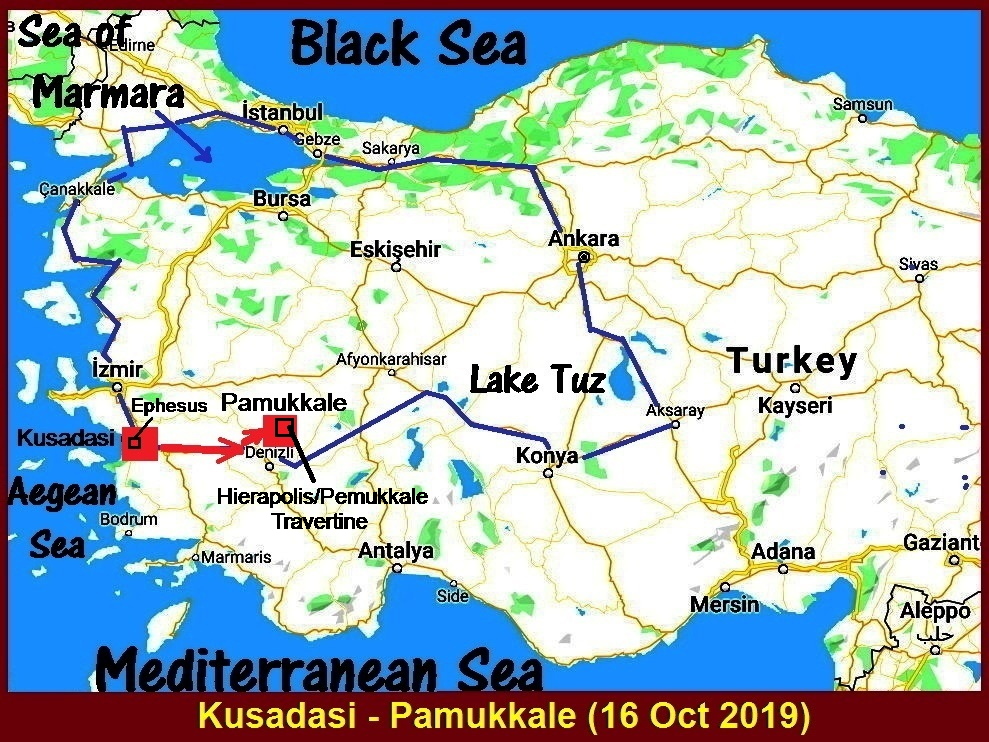
Entrance to Hierapolis
On arrival at the ancient city of Hierapolis, we entered the site with tickets. The city covered a large area but it is in ruin now. Most of it is covered with soil and excavation has been carried out to expose its buildings.
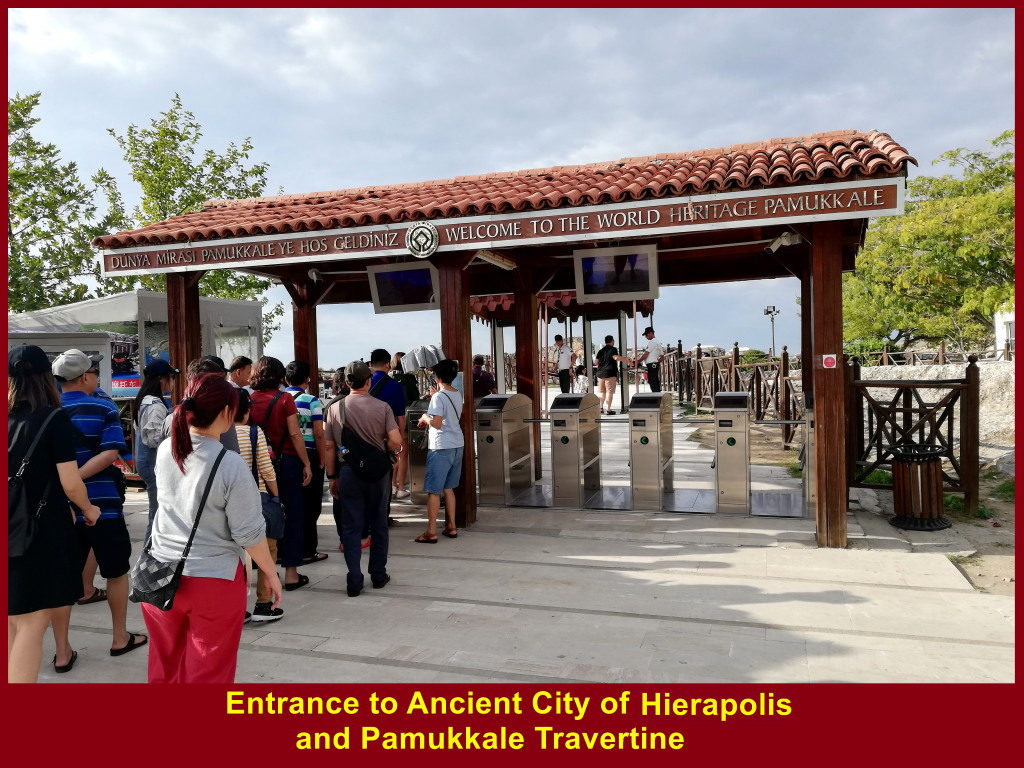
City of Hierapolis(200 BC-1400 AD)
The picture below shows the City of Hierapolis from 200 BC until 1400 AD.
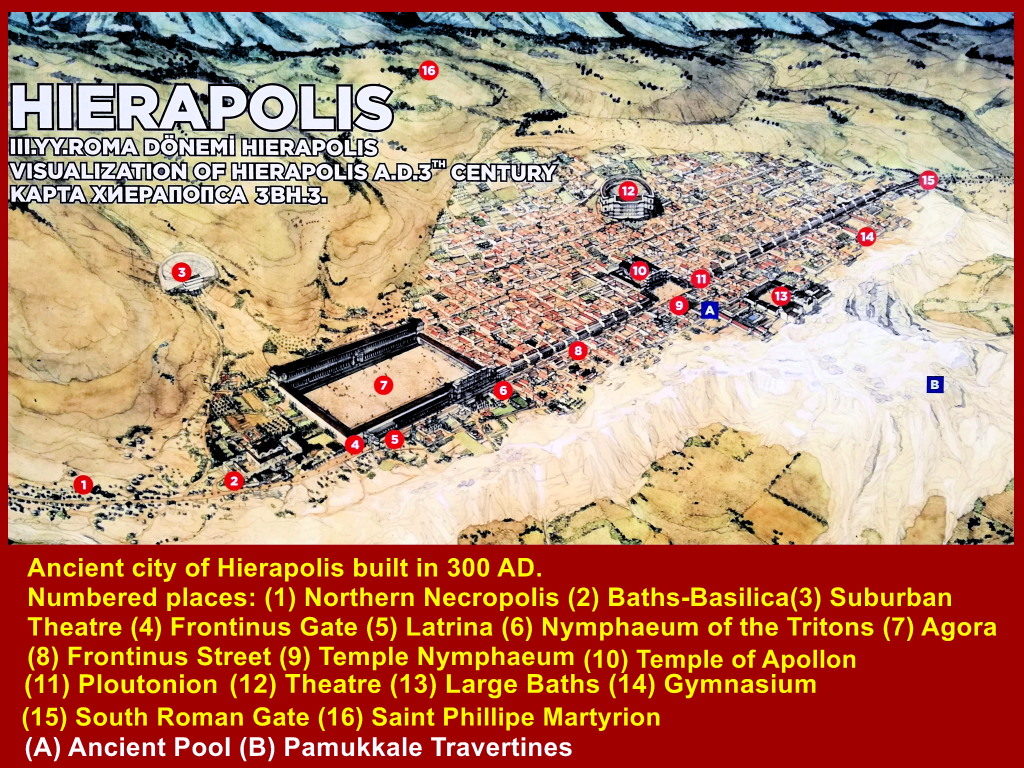
Hierapolis Within a Fortress
The ancient City of Hierapolis was within a fortress with a few gates. The photo below shows one of them.
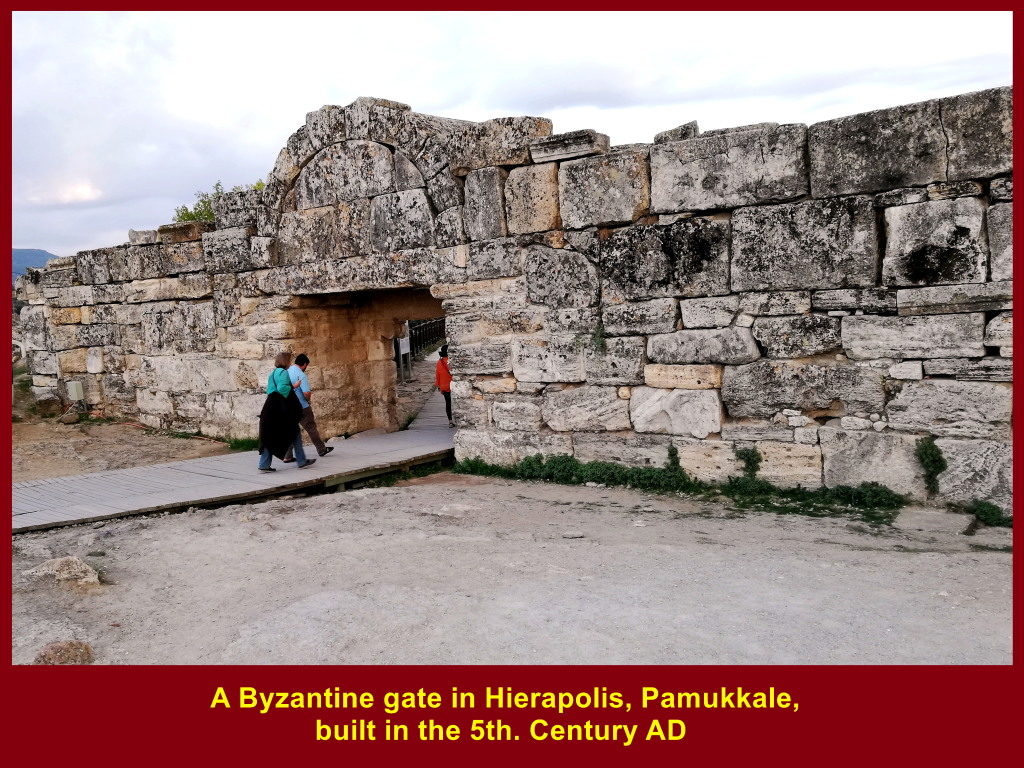
Ruins Over a Large Area
The ancient city had existed for 1600 years from 200 BC until 1400 AD. Its ruins spread over a large area and most of them are buried in the ground by soil from the surrounding high ground.

Ruins of Hierapolis in Photos
The photos below show some of the ruins in the ancient city of Hierapolis.
(i) The Theatre was built in the reign of a Roman Emperor, Hadrian(76-138 AD), in the ancient city of Hierapolis, Pamukkale, Turkey
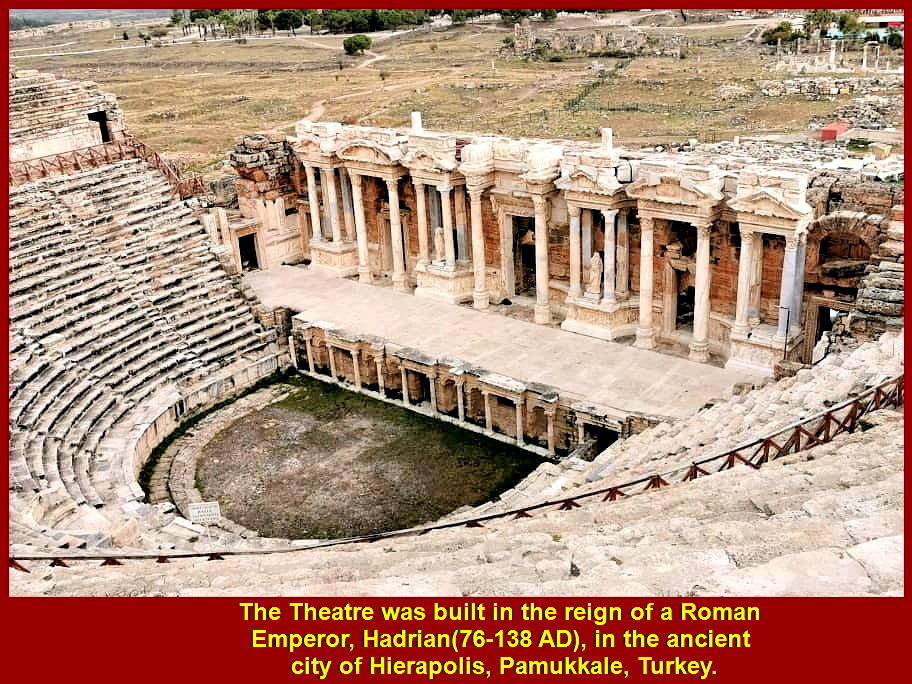
(ii) Part of the ruined city of Hirapolis
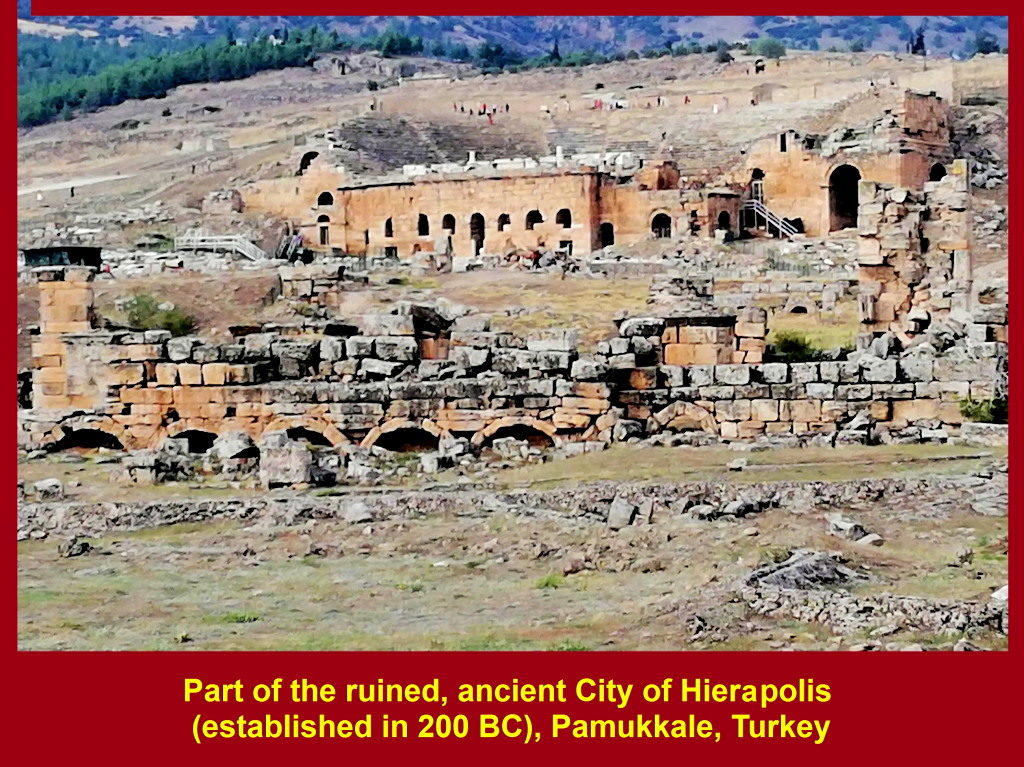
(iii) Part of the ruined Middle Age fortress on the plateau of Hierapolis City

(iv) An ancient building of Hierapolis is now a museum that houses the artefacts of the ancient city.
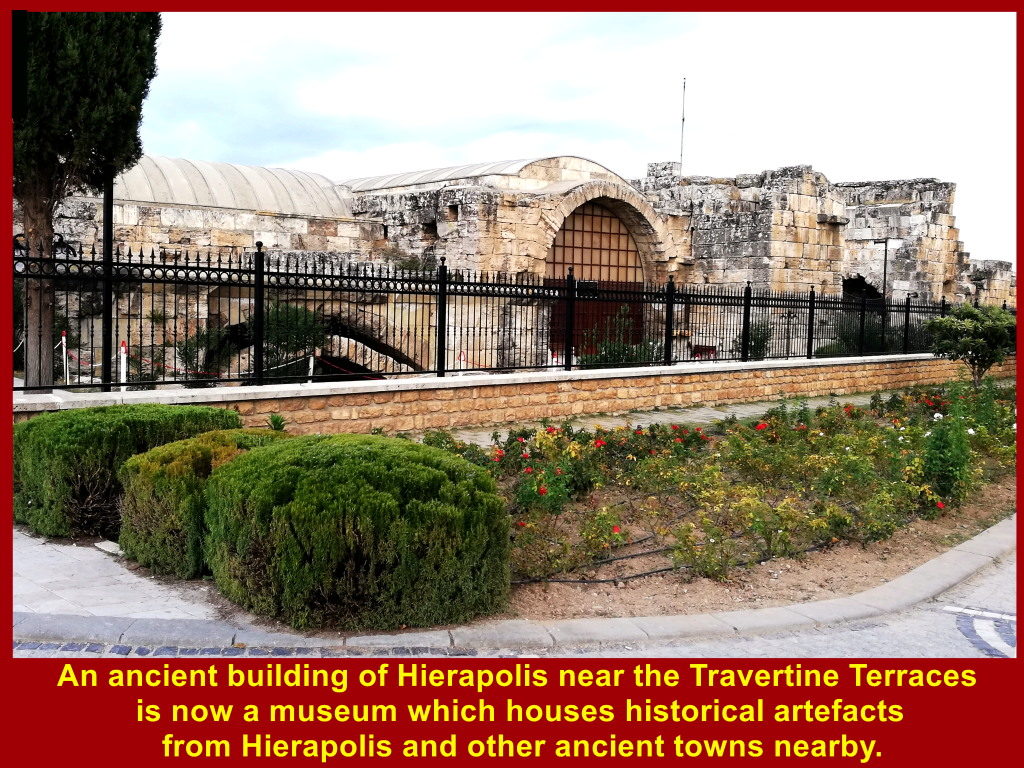
Abandoned Excavation
The photo below shows ruins that have been buried deep in the ground and excavation was abandoned long ago.
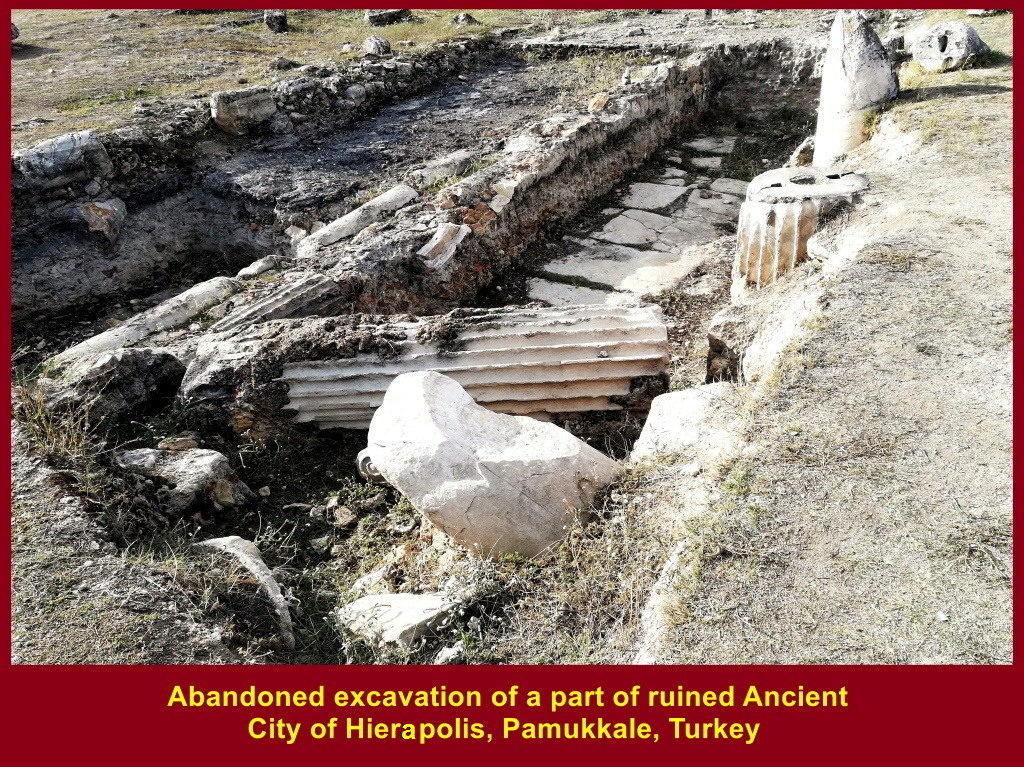
Pamukkale Travertine
Next to the ancient city of Hierapolis is the Pamukkale Travertine. Semicircular pools have been formed on the slope of a plateau. They are filled with a mixture of hot spring water and rainwater during wet seasons. Most of them are empty during dry seasons.
Semicircular Pools
The hot spring contains calcareous salts which then deposit as travertine on the slope of the plateau forming semicircular pools.
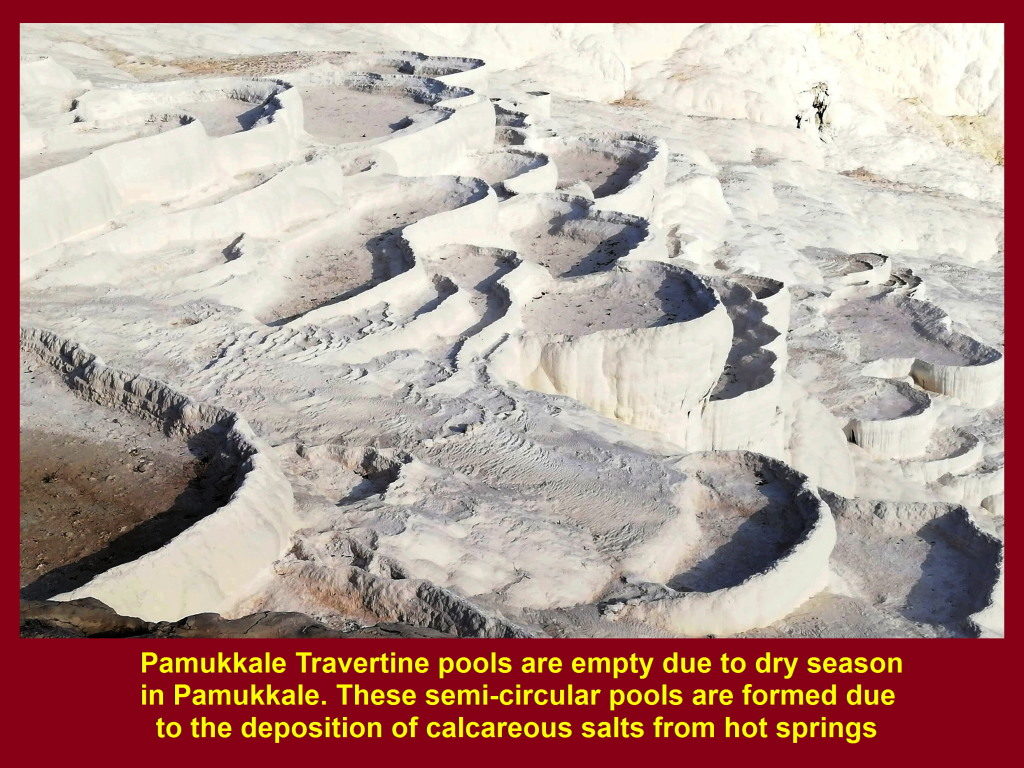
Large Pool
Water flows down the slope of the plateau and into a large pool below in Pamukkale Town.

Feet Soaking in Pools
Visitors to Pamukkale Travertine had a good time soaking their feet in some pools that contained hot spring water on 16 Oct 2019.

Visitors’ Shoes
They took off their shoes and left them on wooden steps before they went down to the pools that contained hot spring water.
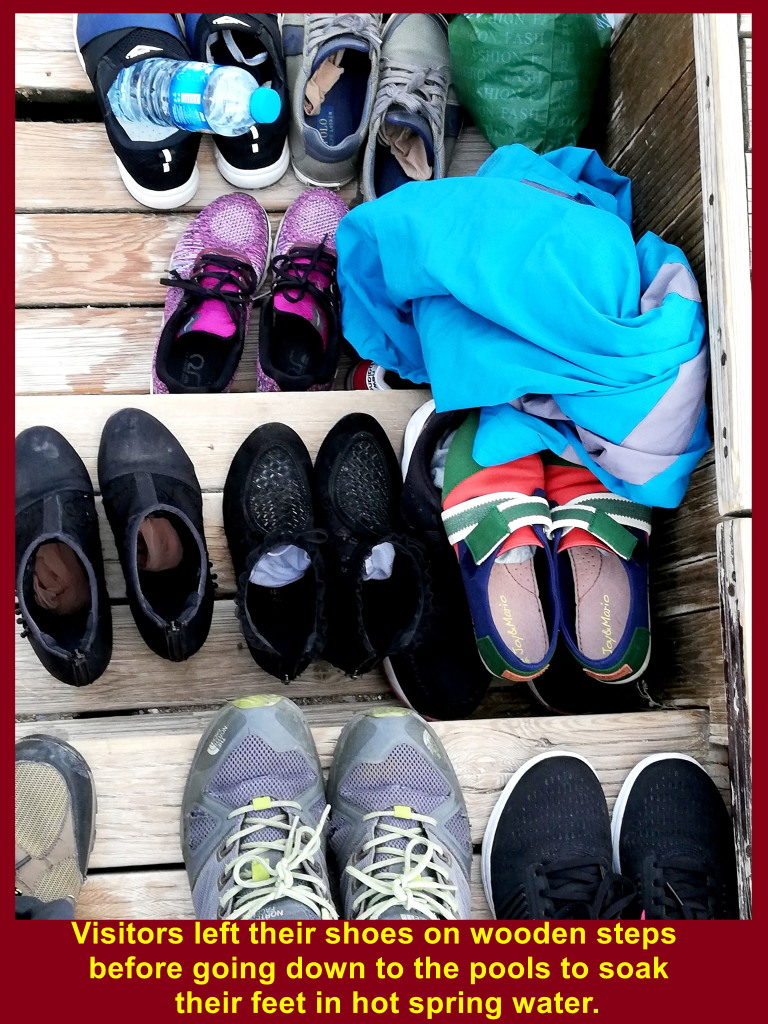
Writer and Wife Soaking Their Feet, Too
Writer and wife soaked their feet in a pool of spring water, too, but the water had turned cold on 16 Oct 2019.

Antique Pool or Cleopatra’s Pool
There is a thermal pool containing mineral-rich hot spring water near Pamukkale Travertine. It is known as Antique Pool or Cleopartra’s Pool. The water is believed to have healing properties for many ailments.
Entrance to Antique Pool near Pamukkale Travertine
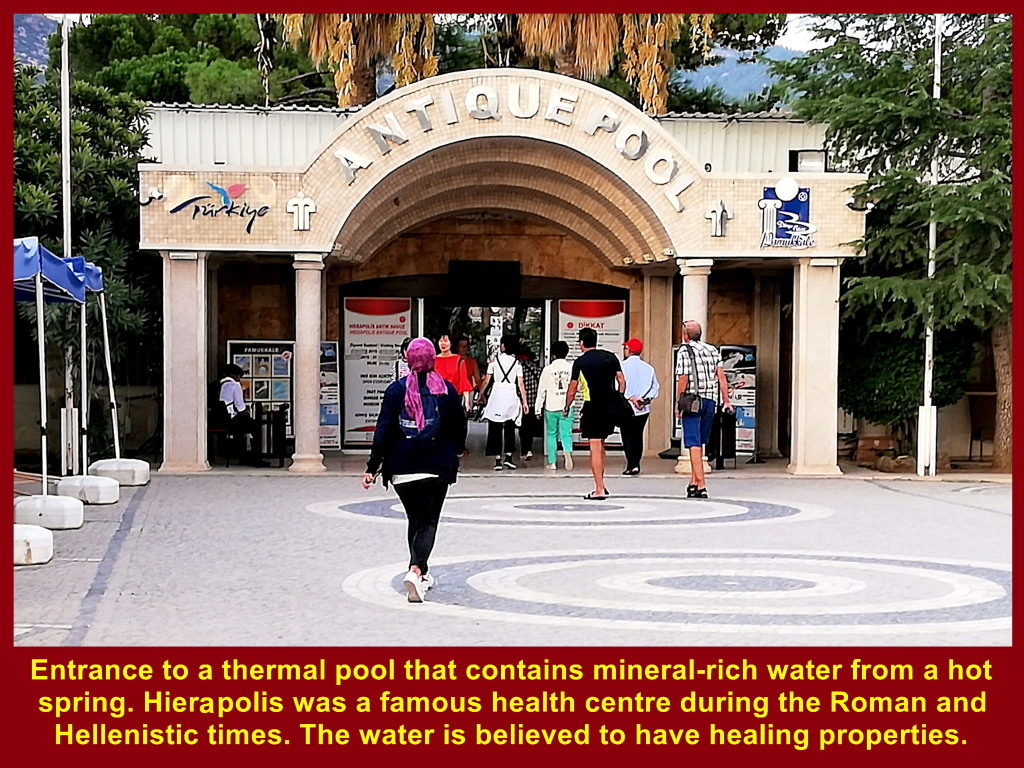
Visitors in the Pool
Visitors were enjoying themselves in the pool of hot spring water hoping that their health problems would be solved on 16 Oct 2019.

Pam Thermal Hotel
At about 6 in the evening, we left Pamukkale Travertine and went for dinner at a hotel, Pam Thermal Hotel, in Pamukkale Town. Later, we stayed a night at the hotel on 16 Oct 2019.

Cold and Hot Spring Water Pools
This hotel has a cold and hot spring water pools at the back for guests to enjoy.

Previous Page / Home / Next Page
Places visited during Turkey Tour(13-22 Oct 2019):
Trojan Horse/Ancient Troy Cities Asklepion Ephesus Hierapolis/Pamukkale Travertine Sultanhani Caravanserai Pasabag Valley Uchisar Valley/Kaymakli Underground City Gerome Valley/Turkish Night Show Hot Air Balloon/Lake Golu/Anitkabir Hagia Sophia/Topkapi Palace/Blue Mosque Bosphorus Boat Cruise Spice Bazaar/Grand Bazaar
